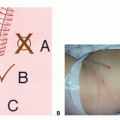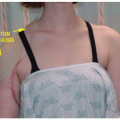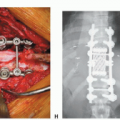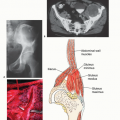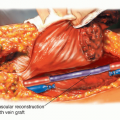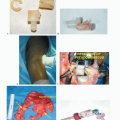Soleus Resection
Amir Sternheim
Jacob Bickels
Martin M. Malawer
BACKGROUND
Malignant tumors of the soleus and gastrocnemius muscles are rare and have been traditionally treated with above-knee amputation. During the past 20 years, the treatment of soft tissue sarcoma of the lower extremities has undergone a dramatic shift toward limb salvage procedures.
Better understanding of the biologic behavior of these tumors, the availability of effective neoadjuvant chemotherapy (which often decreases the tumor size and facilitates a more conservative resection), and the recognition that close negative surgical margins in conjunction with postoperative radiation therapy often provide good local control, thus allowing tumor resection instead of amputation in most cases.
ANATOMY
The soleus and gastrocnemius muscles form a tripartite muscle sometimes referred to as the triceps surae muscle. Together with the plantaris muscle, they form the superficial posterior muscle group of the leg. These muscles act together in plantarflexing the foot and ankle joint.
The gastrocnemius muscle is the most superficial in the superficial posterior compartment and forms most of the prominence of the calf. It has two heads of origin. Its medial head is slightly larger and extends a little more distal than its lateral head. The two heads converge at the inferior margins of the popliteal fossa where they form the inferolateral and inferomedial boundaries. The lateral head originates from the lateral surface of the lateral femoral condyle and the medial head arises from the popliteal surface of the femur, superior to the medial condyle.
The soleus muscle is a broad, fleshy muscle that lies deep to the gastrocnemius muscle. It arises from the posterior aspect of the head and superior fourth of the fibula, the soleal line, and the middle third of the medial border of the tibia. It also arises from the tendinous arch between the tibia and fibula, which arches over the tibial vessels. The soleus muscle and both heads of the gastrocnemius converge to form the Achilles tendon, which inserts into the posterior surface of the calcaneus.
INDICATIONS
Tumors that arise from and are completely within the soleus muscle
Most low-grade and some high-grade sarcomas
IMAGING AND OTHER STAGING STUDIES
Computed Tomography and Magnetic Resonance Imaging
Careful examination of the computed tomography (CT) and magnetic resonance imaging (MRI) is essential in determining resectability. Tumors that extend to and around the popliteal trifurcation or into the gastrocnemius muscles usually require an amputation (FIG 1).
The popliteal space must also be evaluated. Proximal tumors arising within the soleus muscle often extend into the popliteal space and may involve the popliteal vessels, the sciatic nerve, or both.
Bone Scanning
Bone scans may show involvement of the adjacent tibia, fibula, or both.
Areas of uptake should lead to close examination of the corresponding cuts of the MRI and CT scans.
Angiography and Other Studies
Biplane angiography is very useful in determining vascular displacement or encasement.
Careful analysis of the popliteal trifurcation is necessary before surgery and may indicate tumor involvement and thus the need for an amputation.
Biopsy
The biopsy site should be in line with the planned incision for resection and must be located over the most prominent portion of the tumor.
Core needle biopsy has been shown to provide reliable pathologic diagnoses and is our preferred method. Multiple samples can be collected from the same puncture site.
Areas where major arteries and veins traverse should be avoided so as not to penetrate the vessels and risk tumor cell contamination.
SURGICAL MANAGEMENT
Care must be taken to identify, mobilize, and protect critical structures in the posterior leg.
Positioning
Resection is performed with the patient in a prone position. General or epidural anesthesia is used.
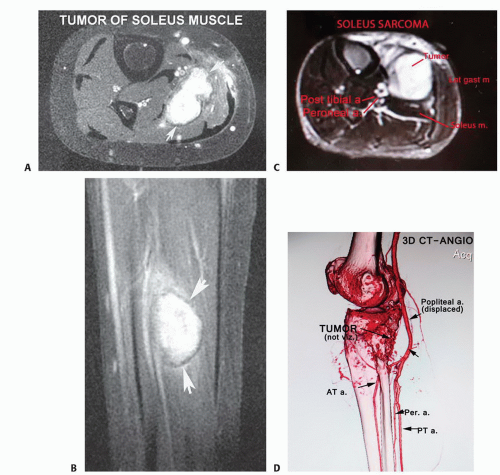 FIG 1 • This patient with an alveolar soft part sarcoma of the soleus muscle was treated with induction chemotherapy followed by limb salvage surgical resection and reconstruction with a Gore-Tex vascular graft. A,B. The axial and coronal T2-weighted MRIs show a large tumor arising within the soleus muscle. Arrows show the extension of the tumor. C. T2-weighted MRI demonstrating a tumor arising from the soleus and encroaching on both the posterior tibial artery and the peroneal artery. Both vessels appear patent at this point in time, although an angiogram may be useful for surgical planning. D. Three-dimensional (3-D) CT angiogram is useful to determine the local compartmental anatomy and the proximity of the soleus tumor to the peroneal vessels and the posterior tibial artery and will demonstrate any vascular anomalies within the planned surgical field.
Stay updated, free articles. Join our Telegram channel
Full access? Get Clinical Tree
 Get Clinical Tree app for offline access
Get Clinical Tree app for offline access

|
